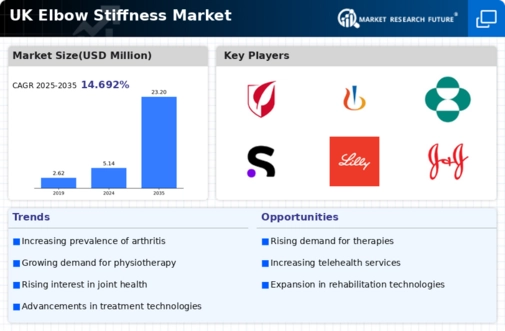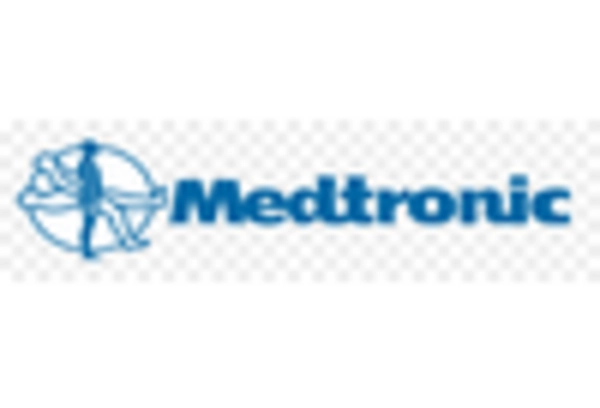Rising Healthcare Expenditure
In the UK, rising healthcare expenditure is influencing the elbow stiffness market positively. The government and private sectors are allocating more funds towards healthcare services, including those addressing musculoskeletal disorders. This increase in spending is likely to enhance access to treatment options for elbow stiffness, such as physiotherapy and surgical interventions. According to recent reports, healthcare spending in the UK is projected to grow by approximately 4% annually, which could lead to improved facilities and resources for patients. Consequently, the elbow stiffness market may experience a surge in demand as more individuals seek effective treatments for their conditions.
Aging Population and Lifestyle Changes
The aging population in the UK, coupled with lifestyle changes, is a significant driver of the elbow stiffness market. As individuals age, the likelihood of developing joint-related issues increases, leading to a higher incidence of elbow stiffness. Additionally, sedentary lifestyles and increased screen time contribute to musculoskeletal problems among younger demographics. The elbow stiffness market is likely to respond to these demographic shifts by offering targeted solutions that cater to both older adults and younger individuals experiencing stiffness. This dual focus may create new opportunities for growth and innovation within the market.
Growing Awareness of Treatment Options
There is a notable increase in awareness regarding treatment options available for elbow stiffness in the UK. Patients are becoming more informed about the various therapies, including physiotherapy, corticosteroid injections, and surgical procedures. This heightened awareness is partly due to the efforts of healthcare providers and patient advocacy groups that promote education on joint health. As a result, more individuals are seeking medical advice and intervention for elbow stiffness, which is likely to contribute to the growth of the elbow stiffness market. Furthermore, the availability of online resources and support groups has empowered patients to take proactive steps in managing their conditions.
Increasing Prevalence of Joint Disorders
The elbow stiffness market is experiencing growth due to the rising prevalence of joint disorders among the UK population. Conditions such as arthritis and tendinitis are becoming more common, particularly among older adults. According to recent health statistics, approximately 20% of adults in the UK suffer from some form of arthritis, which can lead to stiffness and reduced mobility in the elbow joint. This trend is likely to drive demand for various treatment options, including physical therapy and surgical interventions. As the population ages, the elbow stiffness market may see a significant increase in the number of patients seeking effective solutions to manage their symptoms and improve their quality of life.
Advancements in Rehabilitation Techniques
The elbow stiffness market is benefiting from advancements in rehabilitation techniques that enhance recovery outcomes for patients. Innovative approaches, such as robotic-assisted therapy and virtual reality rehabilitation, are being integrated into treatment protocols. These technologies have shown promise in improving range of motion and reducing recovery time for individuals suffering from elbow stiffness. The UK healthcare system is increasingly adopting these advanced rehabilitation methods, which may lead to a rise in demand for related products and services within the elbow stiffness market. As healthcare providers continue to invest in cutting-edge rehabilitation solutions, patient outcomes are expected to improve, further driving market growth.

















Leave a Comment